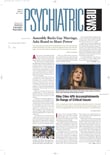Clinical treatment of sleep disorders has burgeoned in the past three decades, fueled by the needs of a large patient population. Only five sleep disorders centers existed in the United States in 1975; today, there are more than 2,000.
But basic research in sleep medicine lags behind, asserted a committee convened this spring by the Washington, D.C.–based Institute of Medicine (IOM). The number of trained scientists falls far short of the demand, the IOM said.
The IOM committee, whose full name is the Committee on Sleep Medicine and Research, will assess the public health significance of sleep health, sleep loss, and sleep disorders across the lifespan. It will hold fact-finding workshops, some open to the public, over the next year. It then will develop a plan to improve treatment and foster research, education, and training in this multidisciplinary field. The IOM expects to publish its report in 2006.
Support for the $810,000 project comes from the American Academy of Sleep Medicine, National Institutes of Health, National Sleep Foundation, and Sleep Research Society.
Committee members include experts in sleep and public health, academic and medical administration, and health sciences research. Harvey Colten, M.D., vice president and senior associate dean for translational research at Columbia University College of Physicians and Surgeons, chairs the panel.
At the committee's first workshop in Washington, D.C., in April, Thomas Roth, Ph.D., discussed psychiatric issues in insomnia, the most common sleep disorder. Roth is director of research and chief of sleep medicine at Henry Ford Health System in Detroit and a clinical professor of psychiatry at the University of Michigan College of Medicine.
About 10 percent to 12 percent of adults across cultures have chronic insomnia, Roth said; of this group, 40 percent have a psychiatric diagnosis. Among the general population, 16 percent have a psychiatric diagnosis.
Insomnia is widely neglected in adolescents, Roth said. His research group found that 32 percent of a large group of adolescents reported having experienced insomnia, 14 percent of them in the preceding month. About 17 percent of adolescents met DSM-IV criteria for insomnia; 12 percent had comorbid psychiatric disorders. A report on these findings is in press at the journal Pediatrics.
People with any medical condition have a higher prevalence of chronic insomnia than those who are well. About 1 in 4 shift and night workers reports insomnia. Why some people develop insomnia while others with the same illness or occupational risk do not remains unclear, Roth said. Insomnia affects about 25 percent of patients seen in primary care, 70 percent of geriatric patients, and 90 percent of patients seen in psychiatric practices.
People with chronic insomnia use more medical and psychiatric services than the general population; experience more social disability, role impairment, and days of limited activity; and report poorer quality of life.
Some 82 percent of people with depression have insomnia. “This high comorbidity is unique,” Roth said. “The association suggests a common pathophysiology.” Every disorder with a high risk of insomnia, he added, also carries a high risk of depression.
Eight published studies show that insomnia is a risk factor for psychiatric disorders, he said. People with insomnia have a fivefold or higher risk of developing depression over time. Whether insomnia is a risk factor for depression or simply a prodromal symptom is not yet known.
A longitudinal study of 1,014 male medical students at Johns Hopkins Medical School found that those who reported having insomnia as students had a significantly higher likelihood of having depression 20 and 40 years after their graduation.
Insomnia also is a possible predictor of mood disorder and relapse; depression rarely precedes insomnia, Roth said. By contrast, in people with generalized anxiety disorder, anxiety shows up before insomnia appears.
The fundamental response to sleep loss in healthy people is sleepiness, Roth noted. In insomniacs, however, it is hyperarousal. Brain imaging, along with elevations in cortisol and changes in circadian rhythms of cortisol secretion, also show evidence of hyperarousal. The pathology in chronic insomnia, he suggested, may be that people with the disorder become more vigilant, even though they are sleeping less.
The IOM committee will hold its next public meeting July 29 and 30 in Washington, D.C.
More information about the IOM sleep initiative is posted online at<www.iom.edu/sleep>.▪
